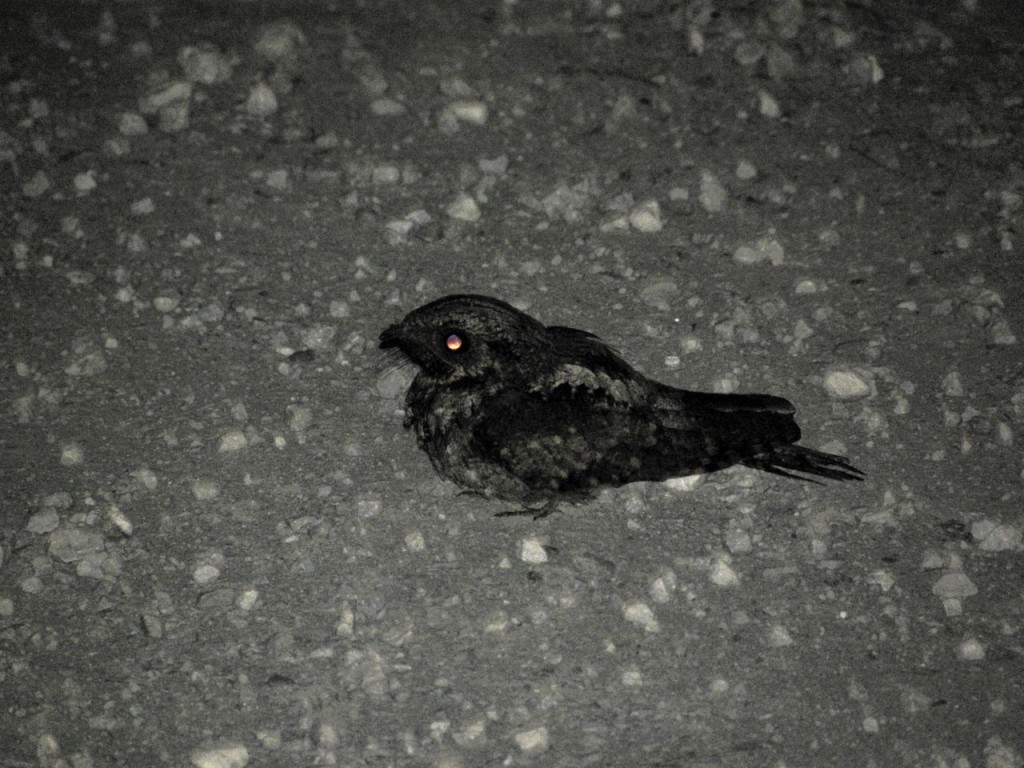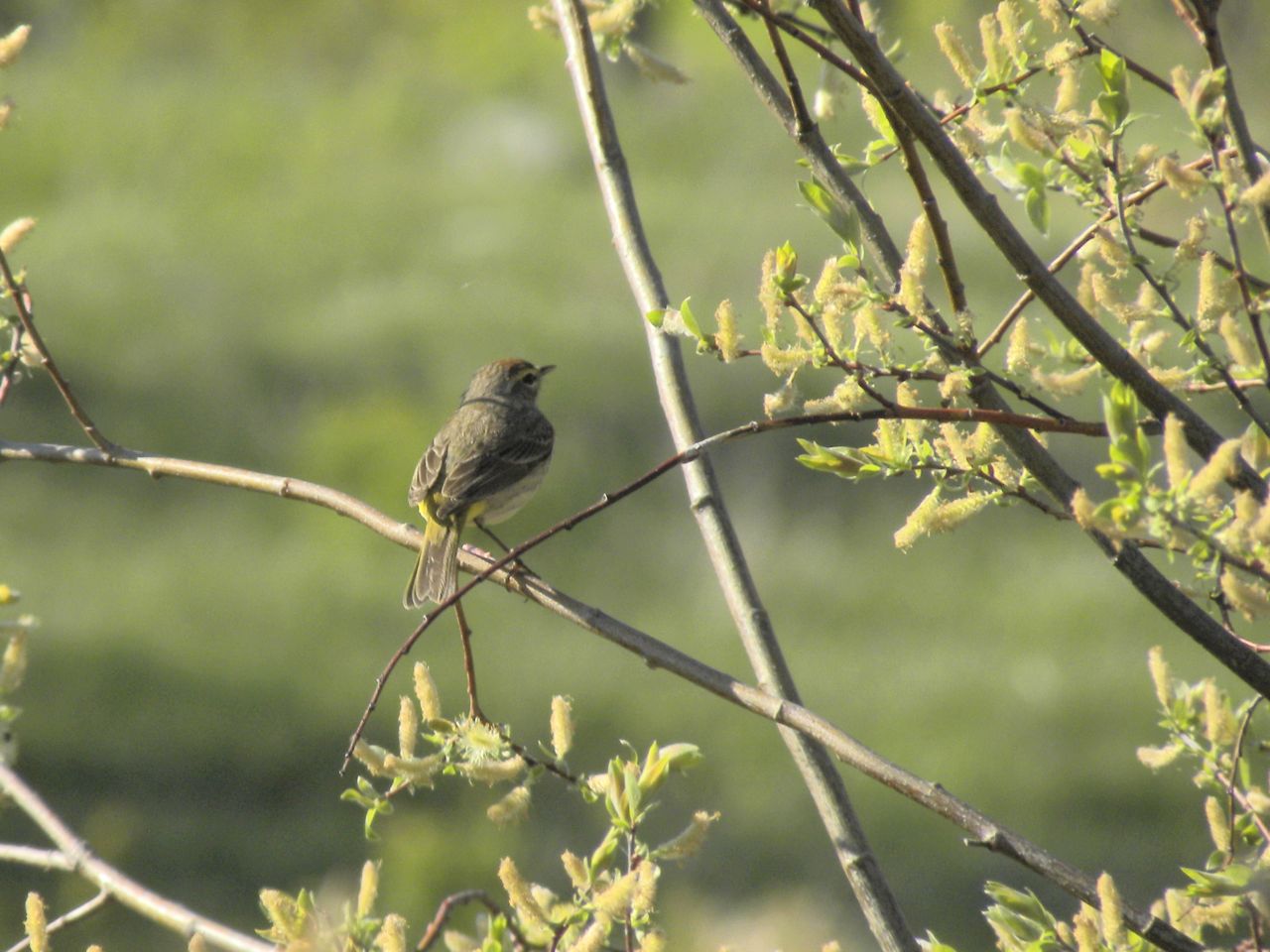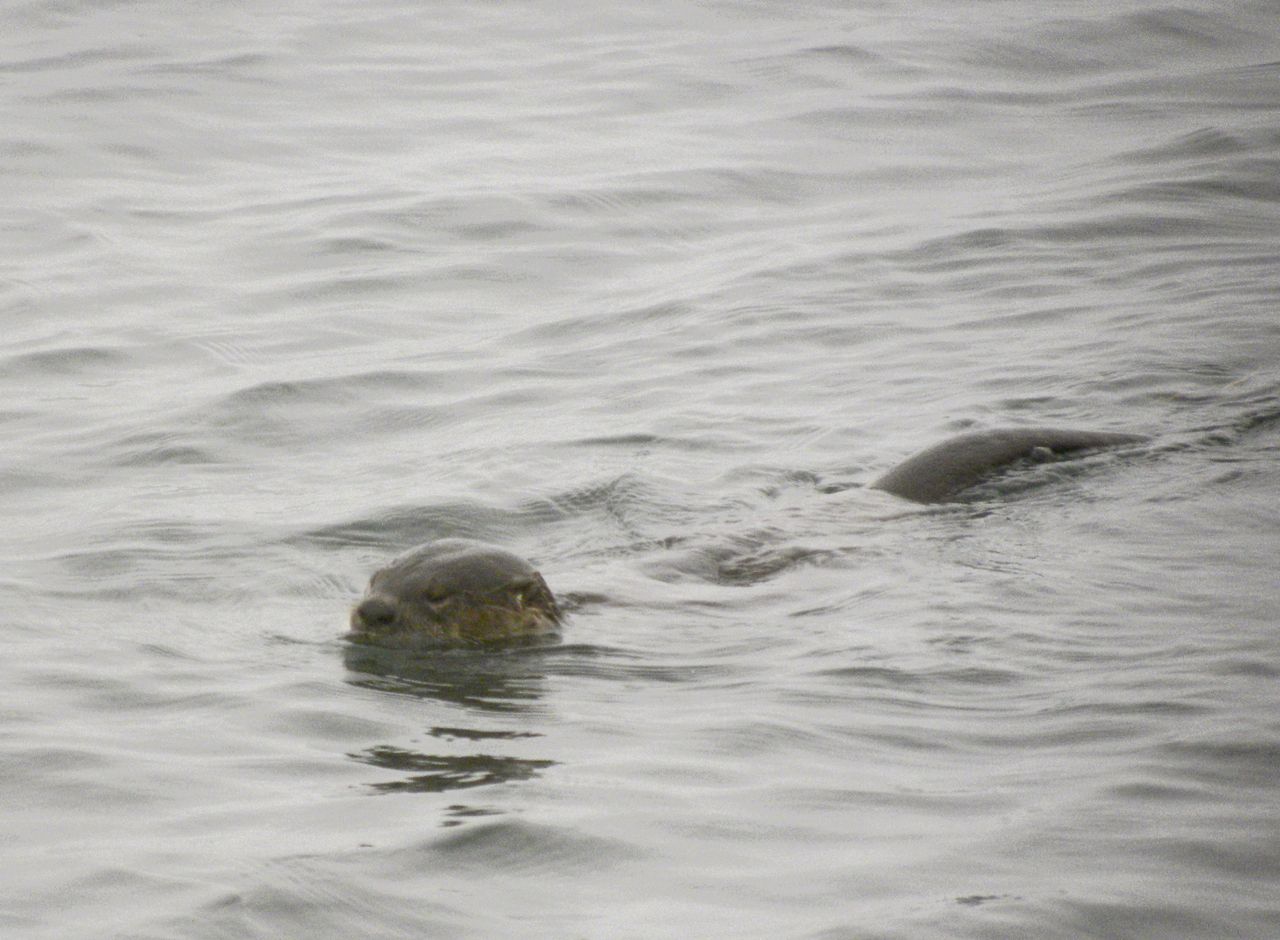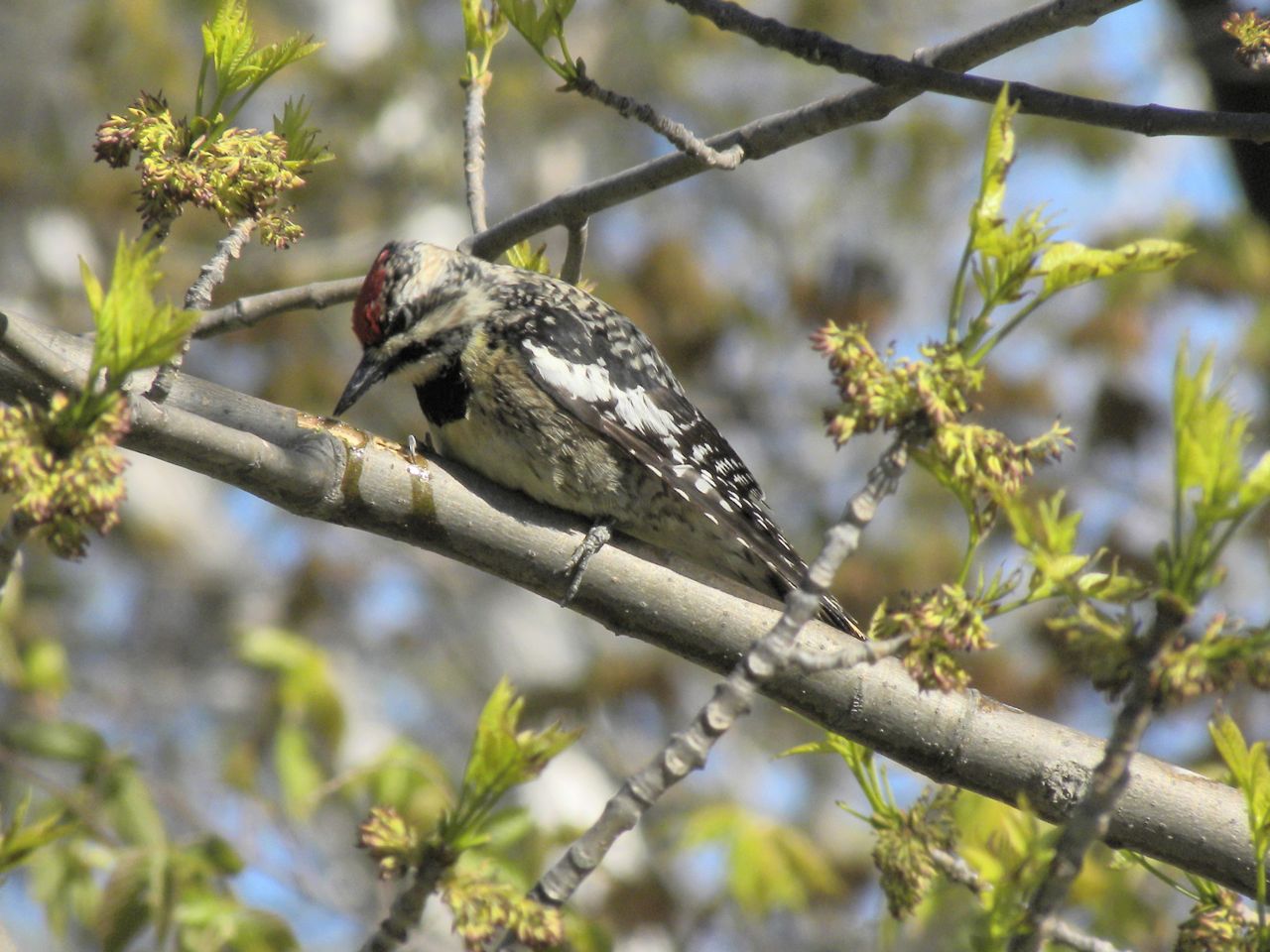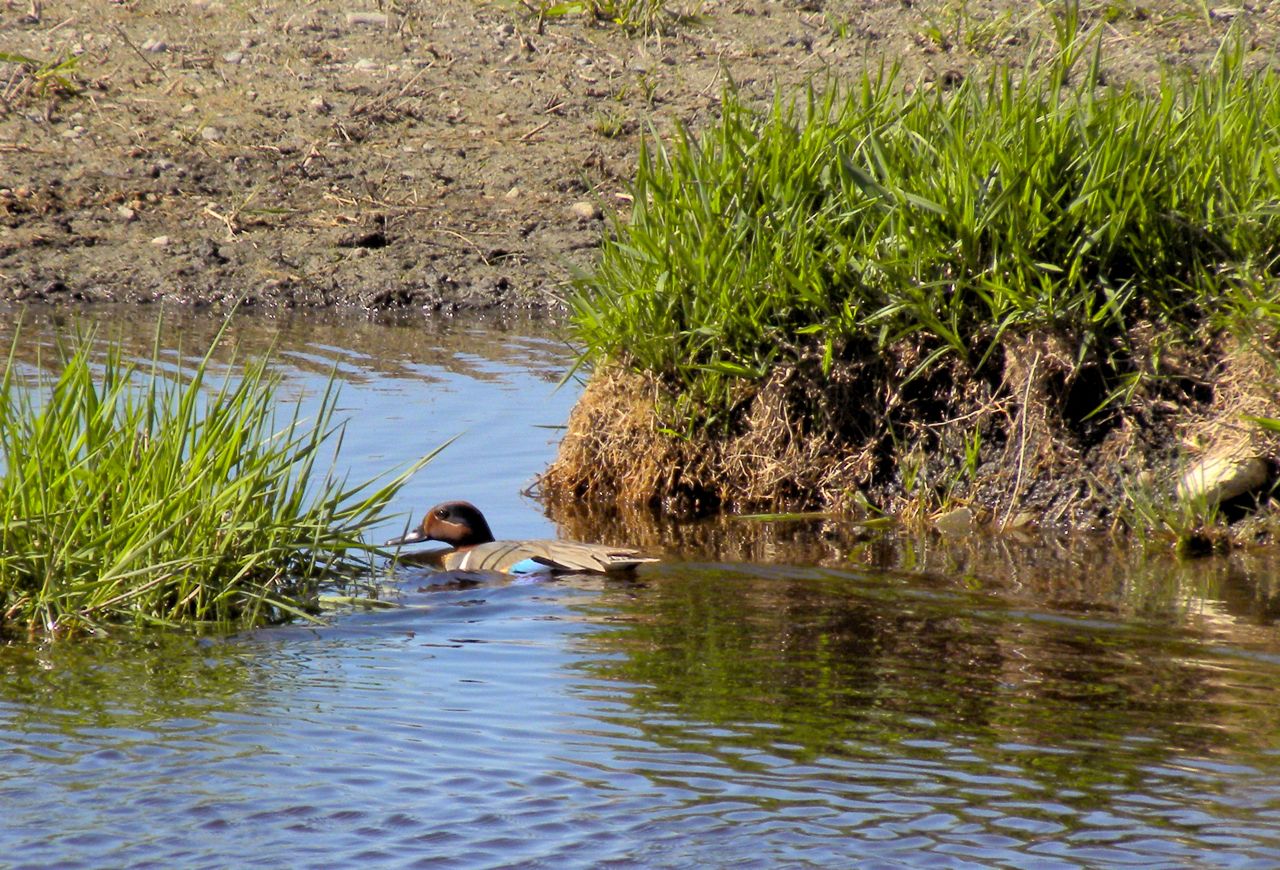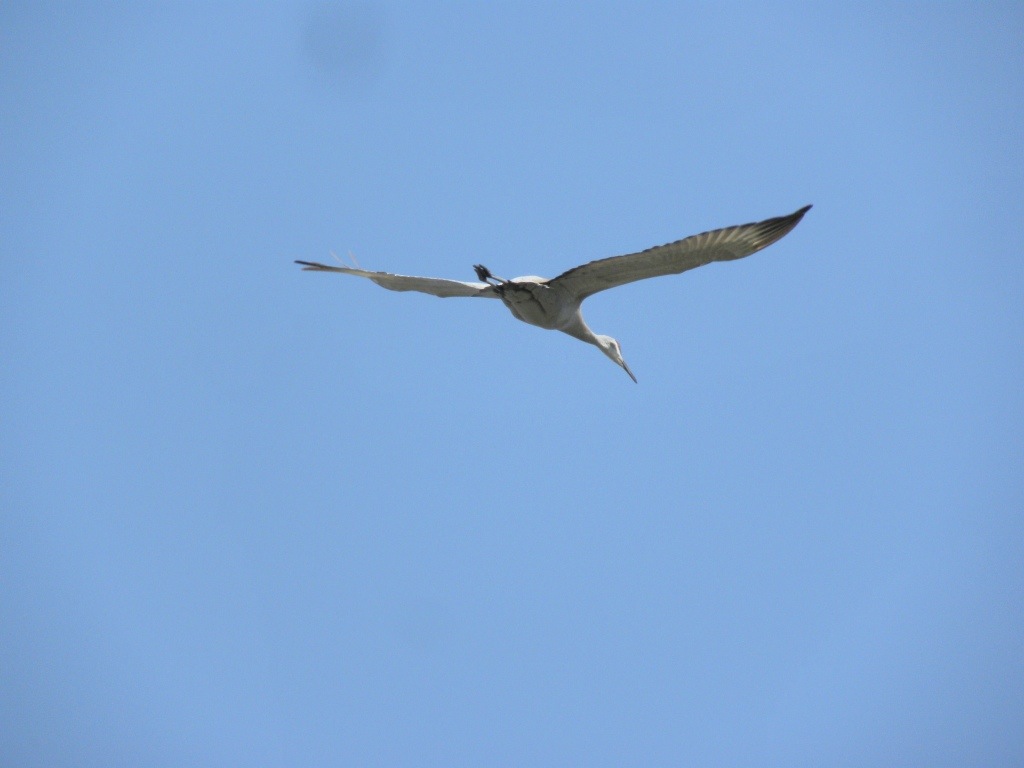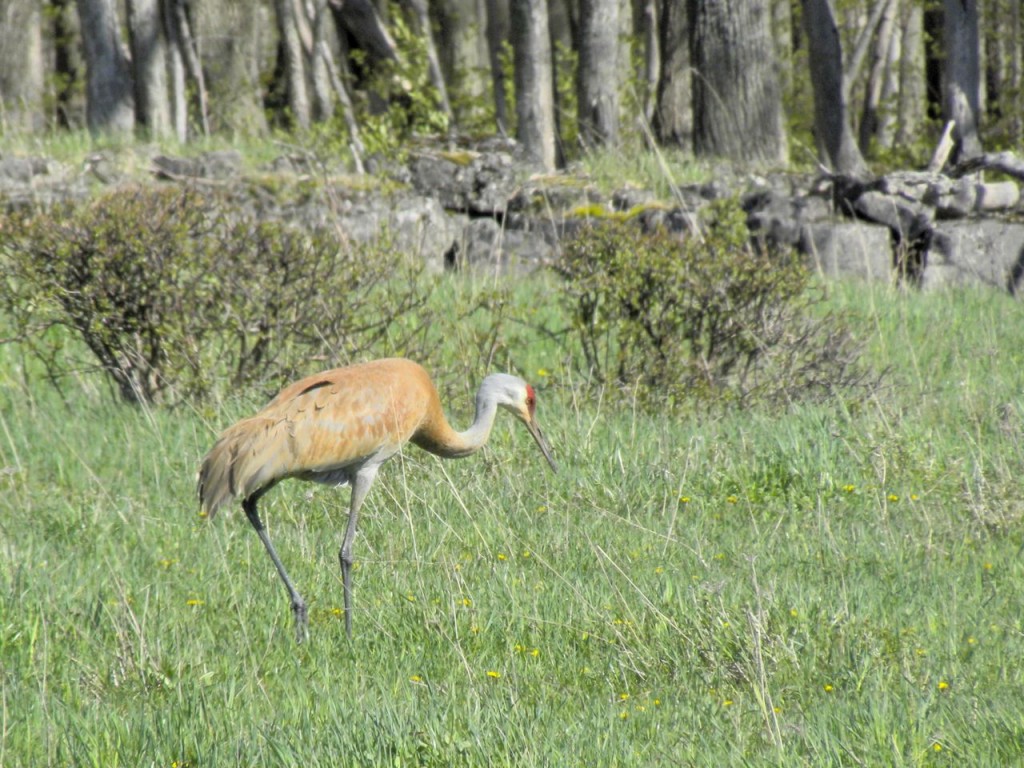20 May 2013. Cabot Head ON. Our licensed bander was unavailable this final morning of my days at the Bruce Peninsula Bird Observatory so we kept the mist nets closed and instead spent the morning watching for and keeping track of species seen.
It was quite foggy until mid morning when finally the sun managed to break through. When flight conditions are poor for one reason or another, and fog is definitely one, birds are forced to drop down and wait out the weather conditions. While there weren’t tons of birds, certainly nothing like yesterday’s fall-out, the mix of species was quite changed. Lots of Black-throated Blue Warblers and American Redstarts and, for a change, several and various woodpeckers. A Hairy Woodpecker or two hung around and I counted three Northern Flickers either seen or heard. I noted a Blue Jay (one of hundreds) alight on the tip of a nearby old and decaying spruce tree, it was immediately joined by a second one – or so I thought at first. But it looked a little different, paler if anything so warranted a second look; to my amazement, astonishment and exaltation this second Jay turned out to be a Red-headed Woodpecker.

I grabbed a few quick camera shots then stumbled off to tell the others, but it was gone, only the camera to validate the moment.
A Red-headed Woodpecker would be Bird of the Day any time, any place. They are SO handsome and so well, increasingly rare. It was a nice note on which to wrap up my days at the Bruce Peninsula Bird Observatory. Here are a couple of shots of enjoyable sightings.


